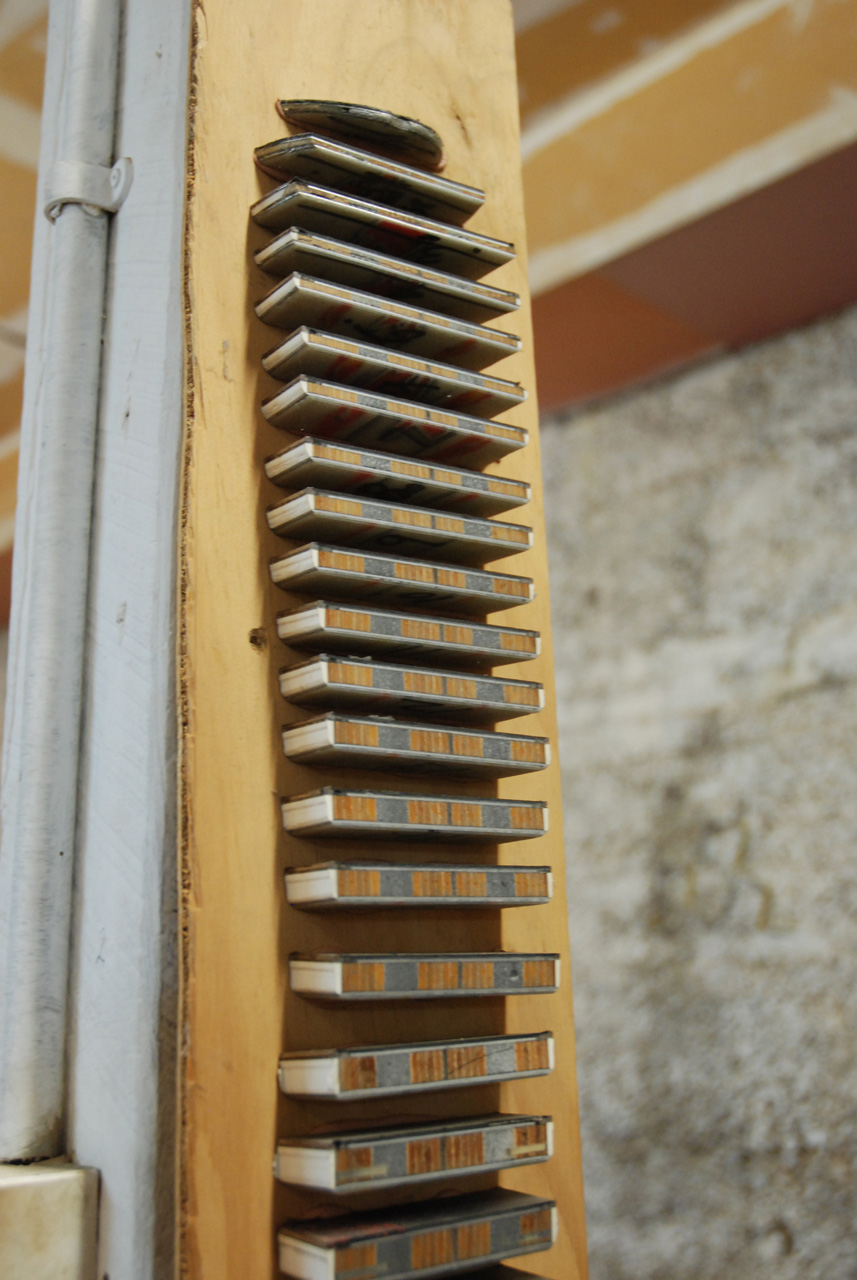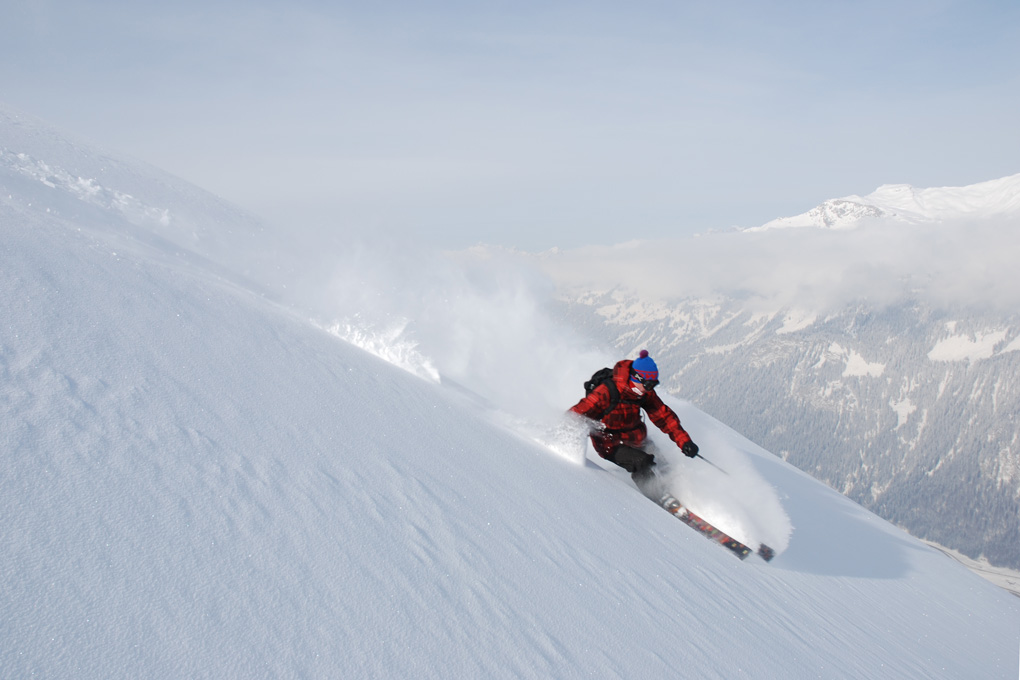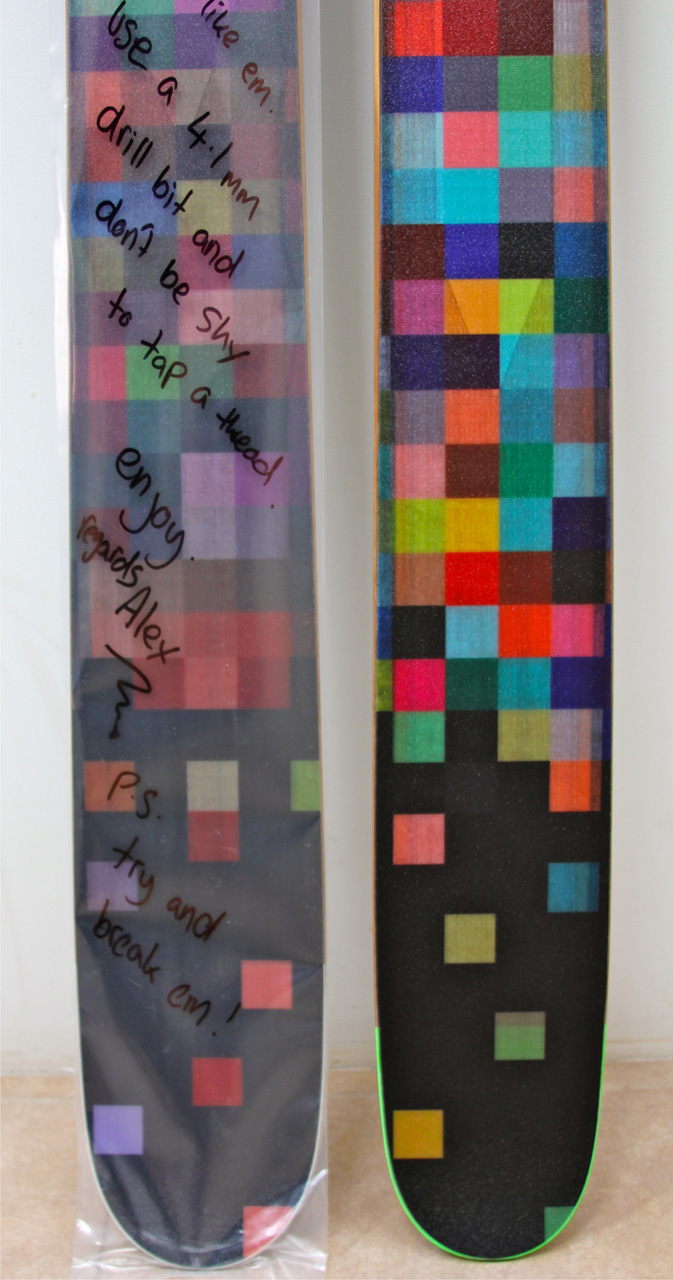When Kingswood Skis founder Alex Herbert made his first pair of skis in 2002, the boutique ski industry was little more than Igneous Skis out of Jackson Hole and a handful of European brands. The Internet was still pretty rudimentary, and there certainly weren’t any “how to make skis” videos posted online. So Alex began to figure it out himself, from scratch.

Alex did know a thing or two about ski construction. Before immigrating to New Zealand in 1997, Alex, who was raised primarily in Australia by his English father and Austrian mother, spent 14 back-to-back winters skiing and working his way around the world as a ski tech. During that time, he became a specialist in major repairs: huge core shots, shattered sidewalls, and bent, broken, and pulled out edges. Then, in 1999, he opened a shop called Ski & Board Surgery in central Christchurch, New Zealand.
At the time, big ski manufacturers were moving away from sidewall sandwich construction to more and more cap construction. From his first-hand experience at the repair bench, Alex knew how this construction, along with materials like foam cores, were not holding up to New Zealand’s rock sharks. He was frustrated that it seemed like skis were become cheaper to make and more expensive to buy. This frustration (and, he admits, a desire to get his hands on some seriously fat skis) motivated Alex to have a go at making his own skis.

His first step was to take his only, beloved pair of skis and cut them into dozens of pieces (86, when all was said and done) to analyze the construction all the way down the ski, measuring the thickness of the core and looking at what other layers he could see. Then he put together his first ski press: two pieces of rolled steel with some car jacks in a faded 1960s office building.
He says the hard part wasn’t making a ski, it was making a great ski, a process that took him another three years.
In 2005, Kingswood Skis hit the market.
“I don’t think he ever thought it would actually become a business,” Alex’s wife, Kris, explains. “But I was too practical to allow him (yet another) ski-related indulgence, so as he tinkered with ski design and searched the world for the best materials, I set to work creating a business around his obsession.”
Kris handles all of the business matters outside of the factory, while Alex makes every pair of Kingswood skis by hand.
“We built a brand based on us: our story, our philosophies, and our passion,” Kris says. Perhaps it’s no coincidence, then, that the couple met on a ski holiday in Austria. (Kris, an American, was living in Belgium, where her father was stationed at NATO.)
As a business, they’ve fought the universal ideal that growth is the number one metric. They have chosen instead to keep Kingswood small and handmade, which allows Alex to be a craftsman rather than a factory manager, and allows he and Kris to have plenty of time for family and skiing.

Not surprisingly, they’ve had some struggles—global economic crises, fluctuating exchange rates, and the loss of their home and factory in the 2011 Christchurch earthquakes. “But we’ve stayed true to our principles,” Kris says.
Part of that is how Alex makes each ski: not just by hand, but by learning more about the customer it’s being built for. Originally, Alex made skis with a choice of two flexes, understanding that big, heavy, hard-core skiers wanted more solid skis, and that people often had strong preference on flex. But some people opted for a flex pattern that wasn’t right for them, and he and Kris would be devastated if one of their customers came back to say they didn’t like their skis.
So Alex started asking people questions about how they ski and about their height and weight, which allows him to tailor each pair for that person.
This business model means that Kingswood doesn’t sell skis in shops, they don’t hold stock, and they are always at the mercy of their next order rolling into the inbox. But it works for them.
Currently, Kingswood offers a line of four models, with variations on these models that range from 88mms wide to 136mms wide, and they press about 100 skis a year.
 This past season, we reviewed one of Kingswood’s skis, the SMB (“Fat and Rockered”). Handmade by Alex (of course), it arrived with a handwritten note from Alex on the plastic wrap of the ski itself with a challenge: “Try and break ‘em!”
This past season, we reviewed one of Kingswood’s skis, the SMB (“Fat and Rockered”). Handmade by Alex (of course), it arrived with a handwritten note from Alex on the plastic wrap of the ski itself with a challenge: “Try and break ‘em!”
The acronym of the SMB is a closely guarded secret, but that hasn’t stopped the SMB from becoming Kingswood’s most popular ski. It was Kingswood’s first experiment with rocker, which Alex had eyed suspiciously for several years before adopting. He values stability in a ski, and he wanted none of the floppy banana tips on his skis.
“We’re really interested to hear your feedback on this ski,” Kris wrote back when we received the SMB. “We hope you can give them a good thrashing in all sorts of conditions and provide us with some good, objective criticism.”
Blister’s Jonathan Ellsworth and Paul Forward tried. Jonathan reviewed the SMB from Taos and Alta, then Paul reviewed the SMB in Alaska, at Alyeska Resort and while heli guiding for Chugach Powder Guides.
You should read our results, but in short, these proved to be solidly built, absolutely gorgeous skis.
We’re looking forward to getting on some other Kingswoods while we’re back in New Zealand, including the Kingswood Archetype, an all-mountain ski we spent some initial time on on our last trip to Canterbury, NZ.
And what about the company name, Kingswood?
It started with the “wood” part, which Alex and Kris wanted in the name because the skis were made from wood instead of foam, a big distinguishing feature at the time.
They spent two years coming up with other names, but ultimately settled on Kingswood, though during that time they’d also discovered an alternative to wood: bamboo. Shortly thereafter, they also learned that technically, bamboo is a grass.
“Ha!” Kris laughs. “What’s in a name, right?”

I just got back from the clubbies where I skied my new Kingswoods (Rocketype) for the first time (I picked them up from the Herbert’s factory on the way to the mountains).
Awesome. Better than I hoped for. I can’t wait until I can justify buying another pair. They are so beautifully made and the flex so customised that there is really no need to go narrower than the Rocketypes (for my height anyway).
SMBs next time for me.